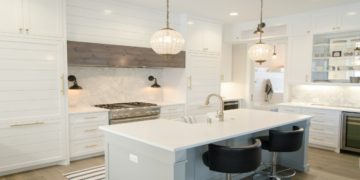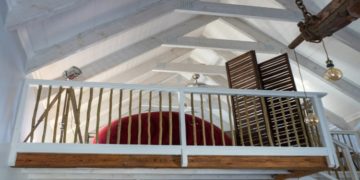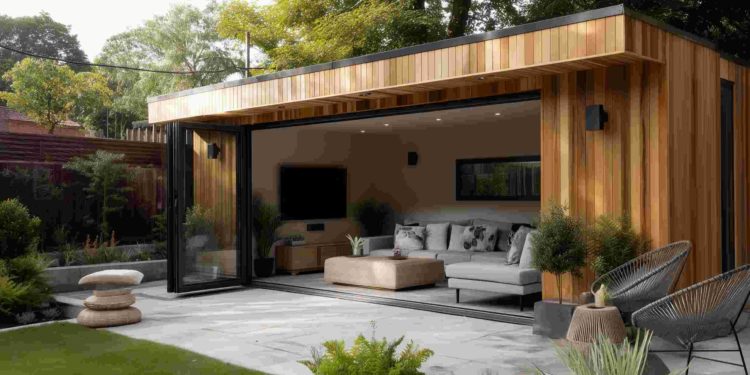Once reserved for potting sheds and the odd summerhouse, the British garden has quietly undergone a transformation. In the last few years, garden rooms have emerged as one of the UK’s most sought-after home improvements. No longer just glorified sheds, today’s garden rooms are stylish, multi-functional spaces designed for everything from remote work and yoga to home cinemas and teenage dens.
Spurred on by post-Covid lifestyle shifts, changes in planning rules and an increased appetite for flexible living, garden rooms are now an architectural statement as much as a practical solution. Whether it’s sleek timber cladding, energy-efficient glazing or fully wired workspaces, the modern garden room is redefining how we use our homes and the demand is showing no signs of slowing.
Living and Working From the Garden
One of the biggest drivers of the garden room boom has been the shift to remote and hybrid working. According to Towerstone Accountants, enquiries related to claiming home office space have more than doubled since 2021. “We’ve seen a huge rise in self-employed clients investing in dedicated workspaces outside the main property,” explains a spokesperson. “Garden rooms often qualify as business use where they’re used exclusively for work, which can open up tax relief on part of the cost especially for things like electrical work, insulation and even solar power.”
This financial shift is being mirrored in search and spending behaviour. Homeowners are increasingly treating garden rooms as an investment rather than a luxury.
Planning Rules and Practical Barriers
Part of the appeal lies in the relative simplicity of getting a garden room up and running. In many cases, a garden room can be built without planning permission as long as it meets specific guidelines: it must be single-storey, under 2.5 metres high at the eaves and not take up more than half the land around the original house.
However, the increase in size and specification has introduced new logistical hurdles, particularly when it comes to installation. Traditionally, lifting heavy timber frames or structural pods into tight garden spaces would involve cranes and considerable disruption. Now, alternatives are emerging.
“More homeowners are opting for platform lift hire instead of traditional cranes,” says a representative from Platform Lift Hire, a firm specialising in temporary lifting solutions. “They’re quieter, more compact and can be operated with far fewer access restrictions. It’s perfect for dense urban areas where getting a crane into a cul-de-sac is next to impossible.”
Platform Lift Hire has seen a huge rise in hire contracts within loft conversions as opposed to traditional garden rooms, where again, loft rooms are being used to assist with hybrid working.
The Power of Self-Sufficiency
Energy usage is also becoming a central consideration. With growing concern over electricity costs and environmental impact, many homeowners are turning to renewable energy to power their garden rooms. “We’re installing more solar panel systems on outbuildings than ever before,” reports MJ Renewables. “It’s not just about going green. Customers want autonomy. A garden room that powers itself, even partially, adds serious long-term value.”
Pairing solar panels with battery storage and low-energy appliances has become a particularly attractive option for those using their space as a full-time office or creative studio. The goal is not just to cut costs but to achieve self-sufficiency and futureproof the space against rising utility prices.
Wired for Productivity
Another priority for homeowners is making sure their garden room is fully connected and equipped for daily use. “People don’t just want lighting and sockets anymore,” says MJ Electrical, a Bedfordshire-based electrician frequently contracted on garden room projects. “They want high-speed internet, heating, outdoor security lighting and sometimes even EV charging nearby. We’re doing full rewires and smart home integrations on garden builds that are more sophisticated than some people’s main homes.”
The demand for advanced wiring has also seen a boost in electricians working collaboratively with architects and garden room manufacturers. It’s become a highly considered process rather than an afterthought.
Design Meets Functionality
Aesthetics are still high on the agenda. The rise of Instagrammable interiors and minimalist Scandinavian design has shaped how garden rooms look and feel. Today’s designs often include floor-to-ceiling bi-fold doors, underfloor heating and polished concrete floors. But functionality is never far behind.
“A lot of customers don’t realise the power load requirements until late in the build,” explains a senior installer at C-Lec Electrical, who specialise in complex outdoor installations. “A small garden gym with a treadmill, heater, hot tub and entertainment systems need a serious power setup. It’s not something you can just plug into an extension cord.”
C-Lec also reports a rise in clients opting for future-ready setups, such as additional circuits for hot tubs or garden saunas. As the spaces become more permanent, so too does the need for infrastructure that won’t limit future use.
A Retail Trend That Keeps Growing
Retailers are adapting fast to meet demand. Specialist suppliers of cladding, doors, glazing and insulation have expanded their ranges to include garden room-friendly materials. Modular systems are also growing in popularity as homeowners seek quicker build times and cleaner installations.
There’s even been a rise in pre-fabricated pod-style rooms that can be craned or lifted into place in a single day, again reinforcing the value of alternative access options like platform lifts.
Conclusion: The Garden Room as a Lifestyle Upgrade
What began as a lockdown workaround has become a cultural shift. Garden rooms are no longer niche purchases for the well-heeled or overly space-starved. They’re now seen as a smart, flexible and futureproof way to expand the home without a full-blown extension.
They tick multiple boxes with work, leisure, wellness and even eco-conscious living, while also adding value and resale appeal. As consumer tastes shift toward more personalised, practical spaces, the garden room has quietly claimed its place as the most desirable room in the house.
Whether it’s solar panels on the roof, intelligent lighting in the walls or tax efficiencies behind the scenes, the message is clear: the future of home life might just lie a few steps beyond your back door.







































































